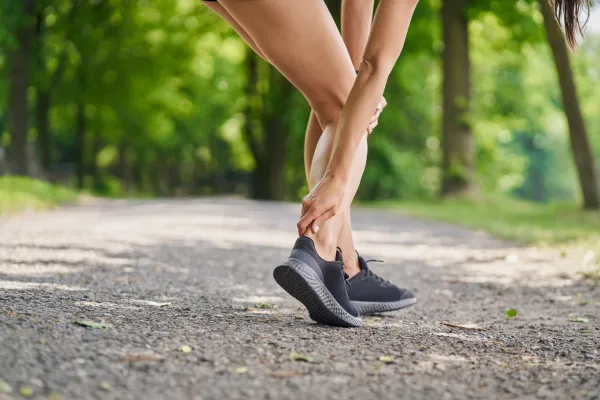
Achilles Tendonitis Slowing You Down? Here’s How to Get Back on Your Feet
Your Achilles Is Screaming—But You’re Not Sure Why
It starts as a tight feeling at the back of your heel.
Then it turns into a dull ache.
And before long, every step feels like someone’s jabbing your lower leg with a hot needle.
You try to “walk it off.”
You stretch.
You ice.
But the pain always comes back.
If this sounds familiar, chances are you’re dealing with Achilles tendonitis—and no, it’s not just a “runner’s injury.”
This condition affects office workers, walkers, gym-goers, and weekend warriors alike.
And while it can be frustrating and stubborn, Achilles tendonitis is very treatable—with the right plan.
What Exactly Is Achilles Tendonitis?
Your Achilles tendon is the thick band of tissue that connects your calf muscles to your heel.
It’s responsible for every step, jump, or push-off you make.
Achilles tendonitis is inflammation of that tendon—caused by overuse, poor mechanics, or sudden changes in activity.
Common symptoms include:
Pain and stiffness at the back of the heel (especially in the morning)
Tenderness when pressing the tendon
Discomfort when walking, running, or standing for long periods
Swelling or thickening around the tendon
Why It Happens
At Physiotherapy Ballincollig, we see Achilles issues triggered by a range of everyday factors:
1. Sudden Increase in Activity
Jumped into a new workout routine? Increased running distance? That spike in load can overload your Achilles.
2. Poor Footwear
Flat, unsupportive shoes—especially when training or walking long distances—can strain the tendon.
3. Tight Calves + Weak Glutes
This combo places all the demand on your Achilles to do the work your larger muscle groups should be sharing.
4. Old Injuries Left Unchecked
A previous ankle or foot injury that wasn’t properly rehabbed can quietly change how you walk—and load the tendon the wrong way.
Why Rest Alone Won’t Fix It
Sure, resting might ease the pain for a bit.
But once you’re active again? The pain returns.
That’s because rest doesn’t restore strength, mobility, or proper tendon loading.
You don’t need more rest. You need rehab.
How We Fix Achilles Tendonitis the Right Way
At Rehab Services Ballincollig, we follow a clear, evidence-based roadmap to get you pain-free and moving again:
✅ 1. Full Biomechanical Assessment
We don’t just look at your heel—we examine:
How you walk
Calf flexibility
Ankle range of motion
Glute and hamstring activation
Foot posture and arch support
This helps us uncover why the tendon is irritated.
✅ 2. Load It—The Smart Way
We use eccentric strengthening—a proven method that helps the tendon heal and grow stronger under controlled stress.
You’ll start with slow heel drops and progress as pain allows.
These are not just “exercises”—they’re your comeback strategy.
✅ 3. Mobilise and Stretch (When Appropriate)
Tight calves and ankles? We release and stretch the tissues safely—without aggravating the tendon.
But we don’t use generic stretches that put more strain on an already inflamed area.
✅ 4. Rebuild Strength and Stability
We progress your rehab with:
Single-leg balance work
Resistance band training
Glute and core strengthening
Gradual return-to-running or sports drills
All tailored to your life, goals, and fitness level.
Why Choose Us?
As a trusted Chartered Physiotherapist Cork, we don’t believe in band-aid solutions.
We believe in lasting results.
Whether your goal is walking pain-free, returning to sport, or chasing the kids around the park—we help you get there.
Achilles Pain Shouldn’t Define Your Day
You don’t need to limp through life.
You don’t need to give up the activities you love.
You just need a plan that works.
Book your Achilles assessment today at our Sports Injury Clinic Ballincollig.
Let’s get you back on your feet—with strength, confidence, and no more heel pain.
Movement is your right—let us help you reclaim it.